Moxon - my new love
Pre-history
I have never had experience with directional ham antennas for shortwave before. It was verticals, dipoles, but directional antennas because I have never had enough space. Thus, my first experience with Moxon was truly disarming. Its gain, practical simplicity, and front-back rejection are very good.
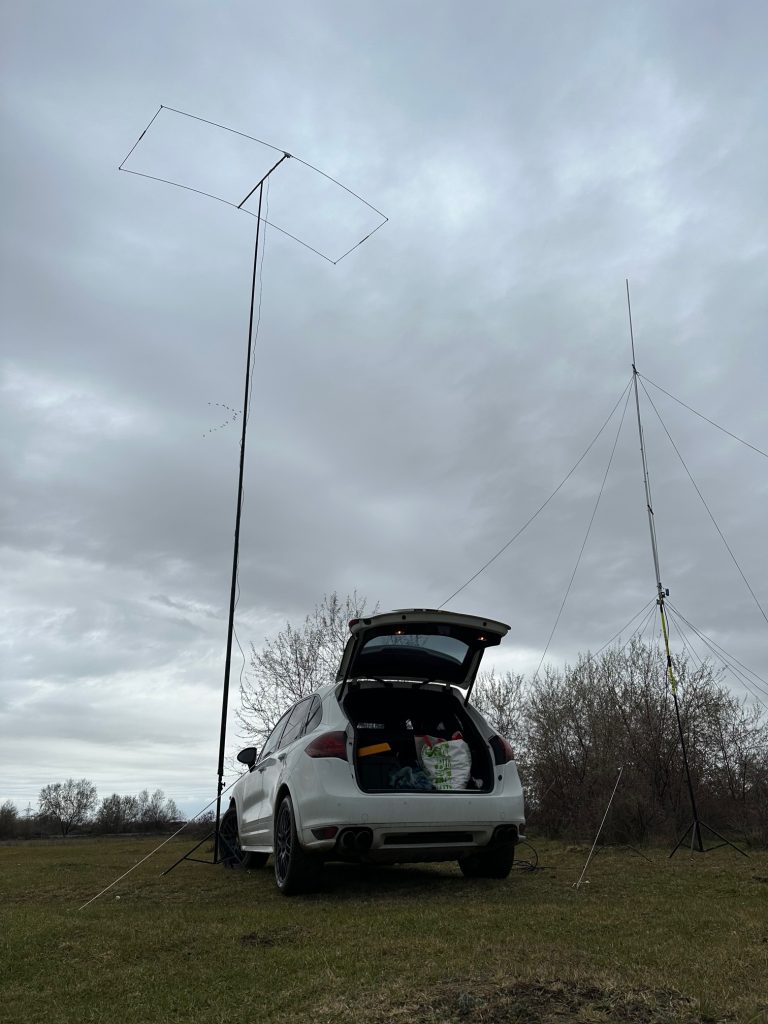
I am not pro-power amplifier. But much less, I like to be ignored because everyone else is louder in the air. I tried to purchase the PA quickly, but to wait 1 month is not my choice. Thus, while I was gathering components for the self-made PA, I decided to improve the antenna gain. And after the search, Moxon turned out to be an optimal solution from many practical perspectives.
Lovely 1/4-wave verticals work as well as they can, but they are omnidirectional horizontally. Thus, I can hear people well, but with my, as turned out, to be very little 100 Watts, I am not heard as well as I wanted. It is time to assault.
I am lucky because the end of 2023 is nearly a peak for the solar activity, i.e., the 10-meter band is open most of the time, which is great. And the 10-meter is the easiest band to play with regarding required heights for the antenna, implementability of the antennas, etc. Thus, the 10-meter Moxon is to be made then.
Since there are two major variants of Moxon:
- Made of wire
- Made of aluminum tubes
the first was to decide which one I liked more. I do like tubes more because the wires entangle all the time, and I am tired of that. Of course, there are solutions to minimize the annoyance, but I prefer avoiding it rather than minimizing it. So, let it be made of aluminum tubes.
Since I planned to place it on top of the wonder of Chinese chemical industry – 10-13 meter telescopic fiber mast – the antenna must be light enough.
At the same time, the tubes must be strong enough of up to 1.9 meters since the span of the 10-meter Moxon is about 3.8 meters:
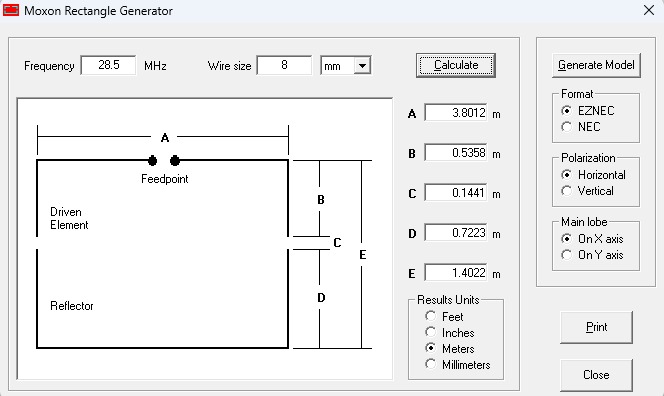
I checked in the hardware shop, and 6-mm tubes bent too much. 8-mm were quite OK. 10-mm – probably, but I was not sure about the fiber mast. As it turned out, the mast is pretty solid. Thus, perhaps, the 10-mm would be even better. But I didn’t know that yet, and built everything from the 8-mm tubes.
It took me one full Saturday and a few workday evenings of 1-2 hours before that to design and create the antenna. On Sunday morning I was ready to drive and test.
Of course, I kept my triple-band 1/4-wave verticals as my references. They have proved to be good for DXing. They are well matched. And over all, I have a good opinion about their performance for DXing and mechanical one. Thus, I had a reference point to compare with.
The Moxon turned out to be light and the fiberglass telescoping pole strong enough to comfortably place the antenna about 9 meters above the ground. I could make it a but higher, because I had 1-2 meters in the tripod left, but my cable was just 10 meters.
I drove close to the tripod and easily rotated the pole with my left in different directions, sitting on the driver’s seat.
The time X was when after a week of preparation and antenna creation, 1 hour of driving, and then 1 hour of antenna assembling and raising, you connect the antenna analyzer … and measure… It is THE moment of truth…
Before raising high and, probably, breaking something, I wanted to have, at least, some idea of the matching…
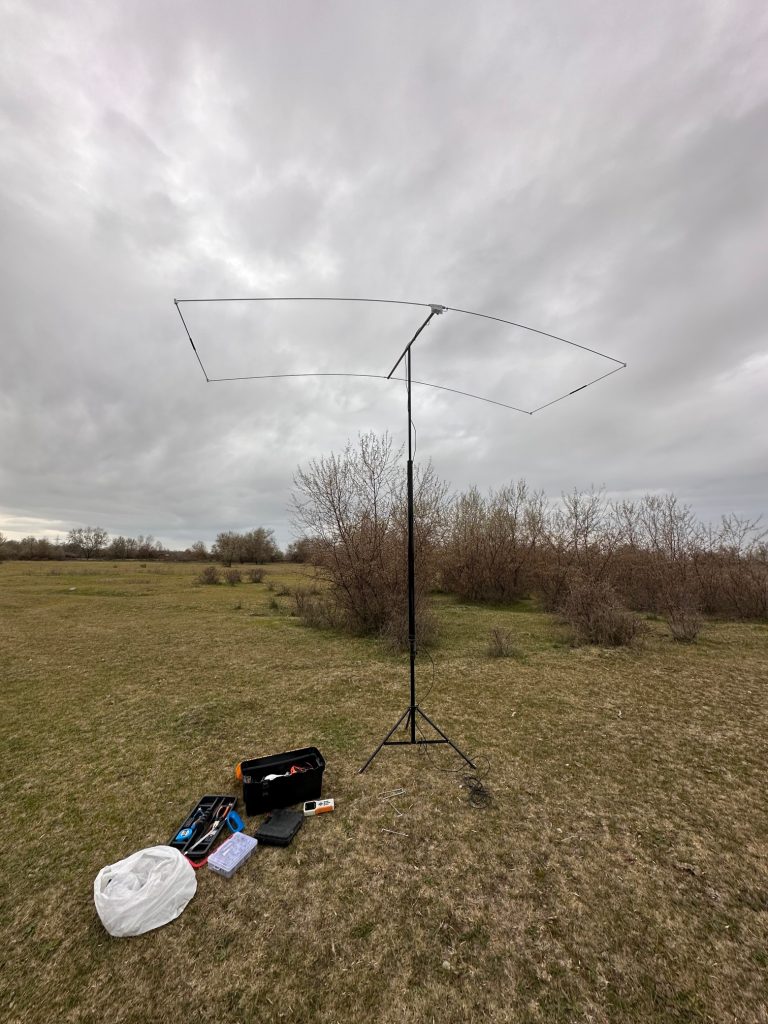
Initial results cheered me up because I was afraid the antenna may be totally untuned and I would finish immediately after I started. But it was good enough and in the right range of frequencies and the SWR levels.
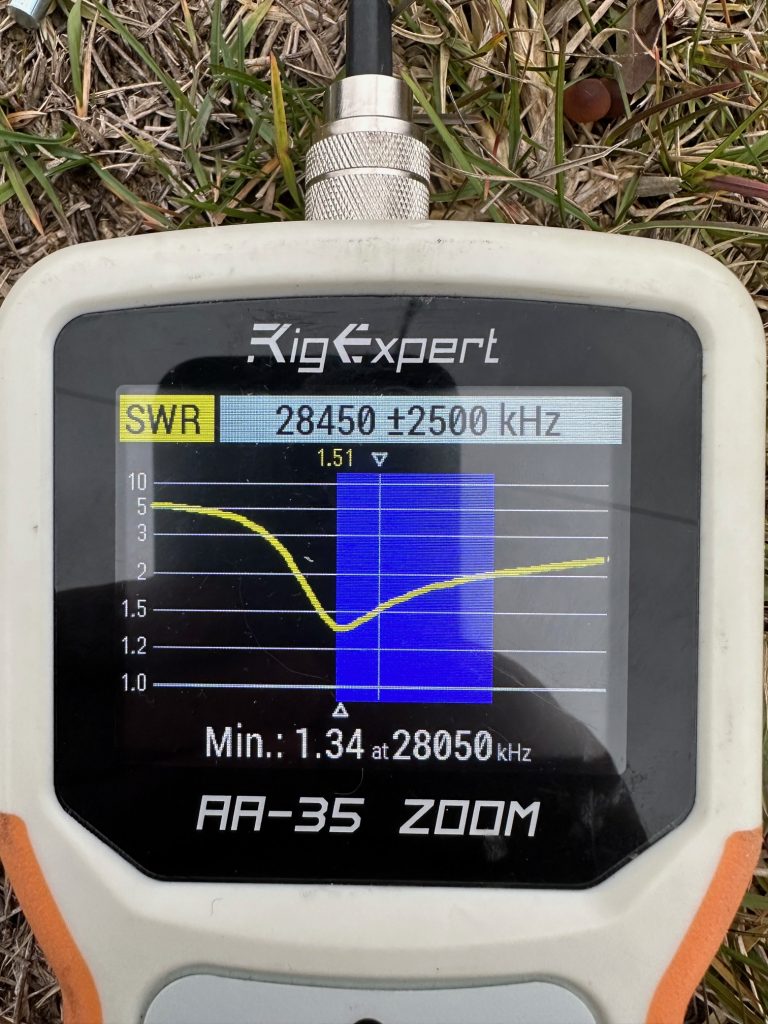
The SWR automatically improved after being raised to the proper height of 9 meters. However, it was still shifted to a central frequency that was too low. However, I loved it because the overall SWR was already low enough up to 28.5 MHz or so where the majority of people are anyway to operate and check the gain, front/back ratio, etc.
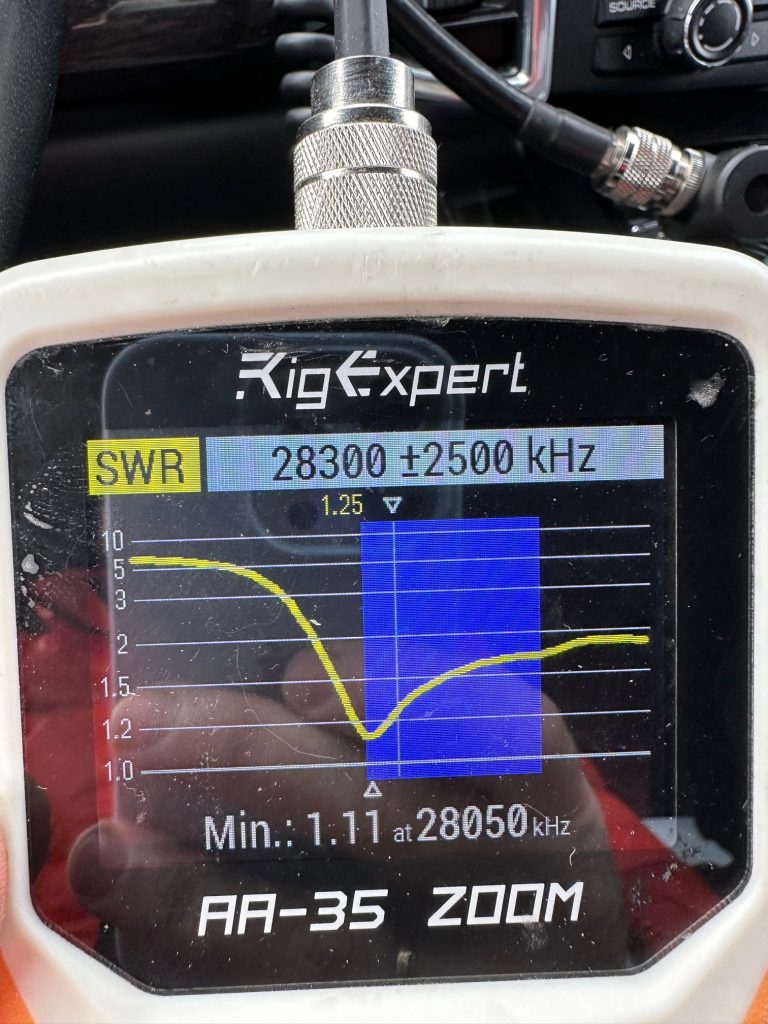
After an hour on top of the pole, either because of the wind, or because the pole dried up, the telescoping pole collaps one by one like in the movie with the antenna dropping right on the car’s roof…
It was close. It stopped collaps with the last part of the pole. But the impuls for the one of the tubes was strong enough to partially break. Luckily – partially.
Bad luck was a good signal that it is time to tune the antenna a bit. Thus, I made the D-tube shorter by ~4 cm and the central frequency shifted to be more central to the band.
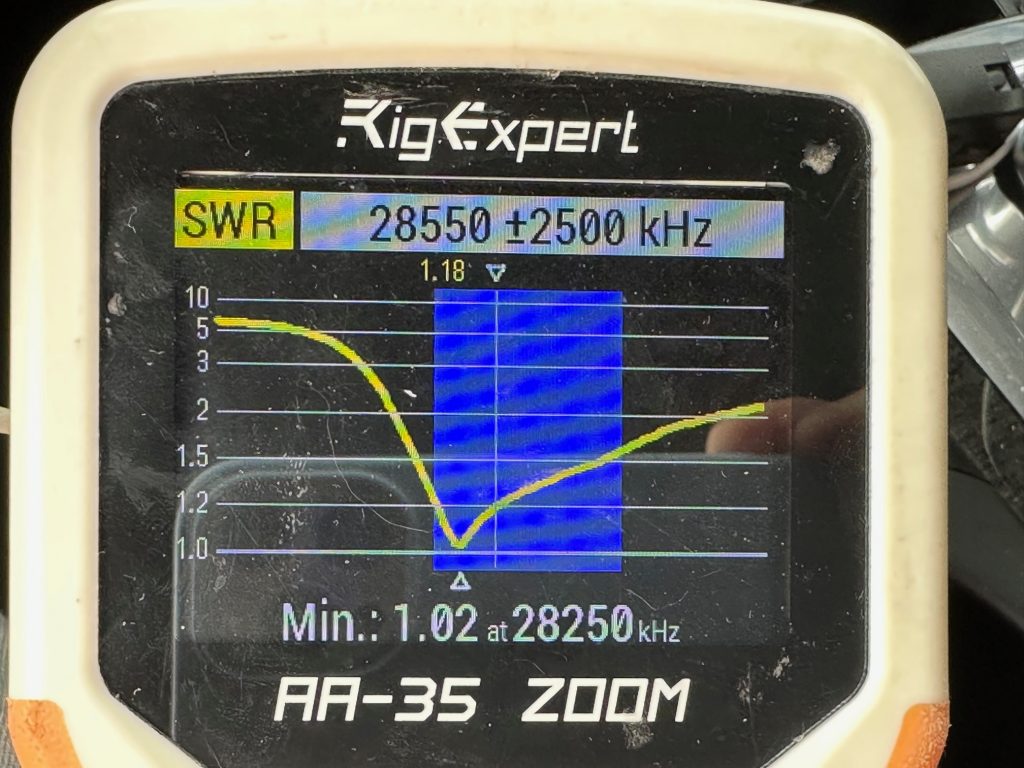
Certainly, there is a lot of room for improvement. When I have more time, I will play with it – make it more central and balanced. But the ease of Moxon tuning is particularly appealing. Achieving good tuning with 1/4-wave with the resonating radials is even more difficult. I often have to erect and dismantle the antenna a few times before reaching the right performance.
I am already thinking about making an identical but more solid version made of 10-mm tubes. It shall be a nice playground for Moxon tuning. And a wider bandwidth, at the same time, perhaps, though it was already pretty good.
I compared it with a well-tuned and proven raised vertical 1/4-wave antenna, and I truly loved Moxon’s performance!
- Gain – 6-9 dB measured by the S-meter. About the same – reports by fellow hams in different distant locations
- Front-back ratio – several units of S-meter – everything as promised by hardly believable 20-30 dB
- SWR below 1.5 in full 28-MHz band
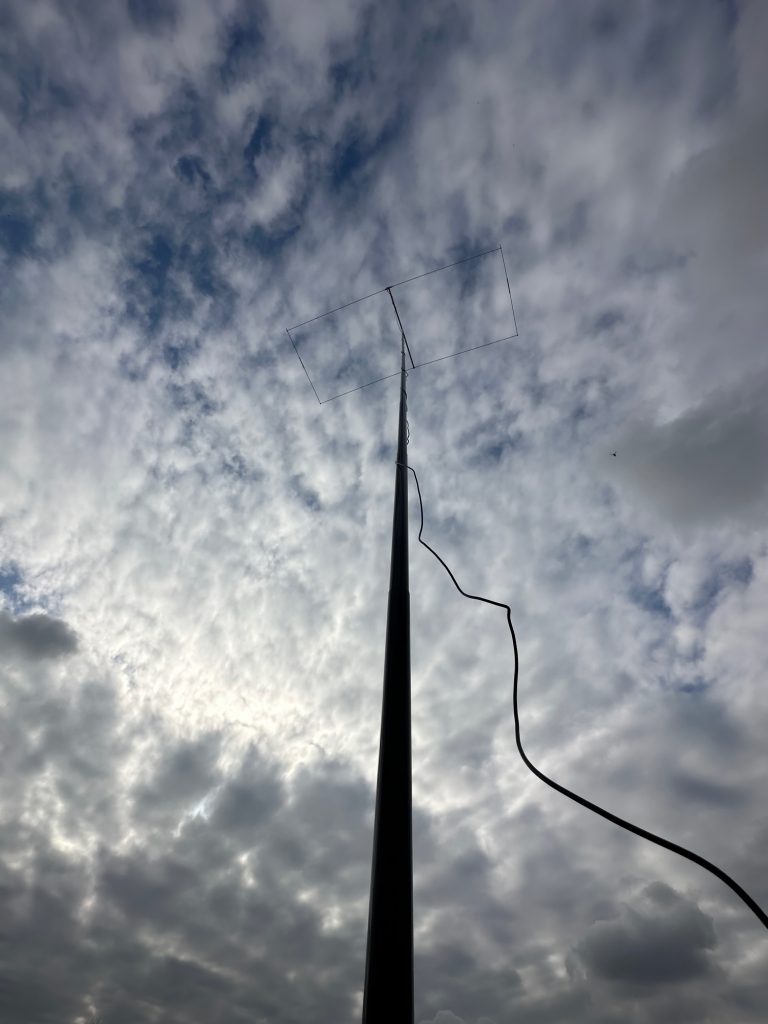
The best, of course, was to operate both 1/4-wave and Moxon. You catch using 1/4-wave because it omni, and then improve your presence on reception and transmission using Moxon. It is powerful and pleasant.
Moxon is not without limitations:
- Single band. Yes, it is possible to build it for several bands. But such an antenna would be too complex to deploy for a few hours and then to assemble back – my typical field operations. Not days – hours or 1/2 of a day in the air and the assembly. The ease of mounting and dismounting is one of the key parameters for the antenna to be cool or not cool
- It is more wind-resistant and more fragile than 1/4-wave. I was lucky that I didn’t have wind
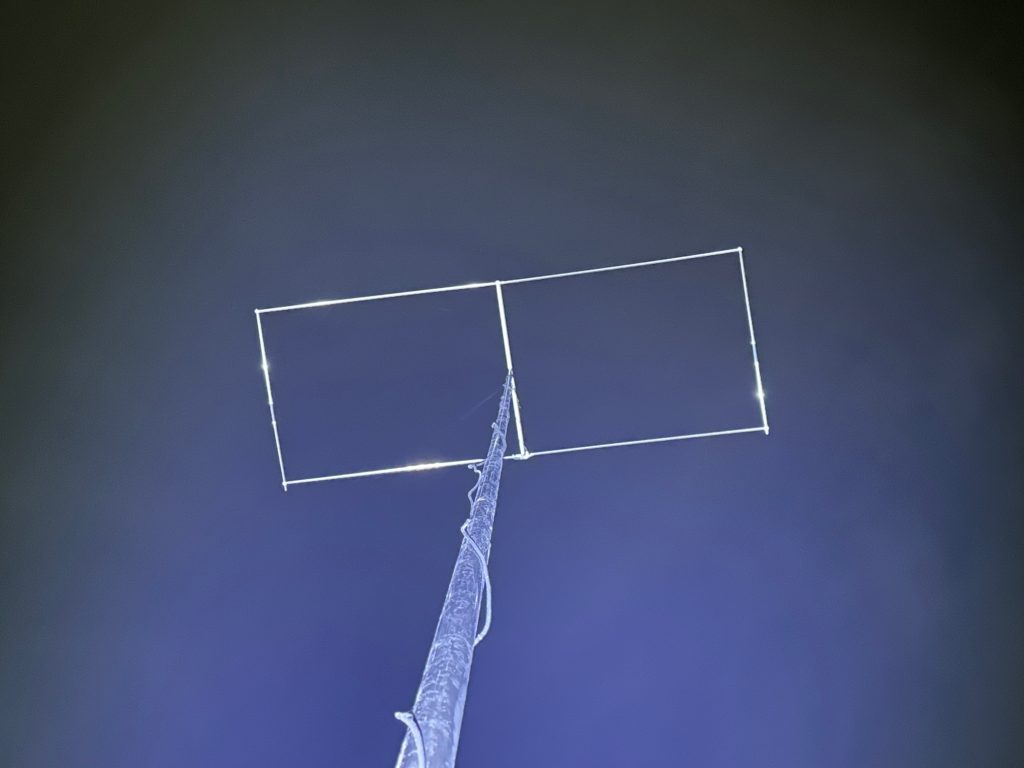
I love Moxon:
- Gain and front/back ratio
- Ease to build
- Ease to install/uninstall
- Relative robustness
